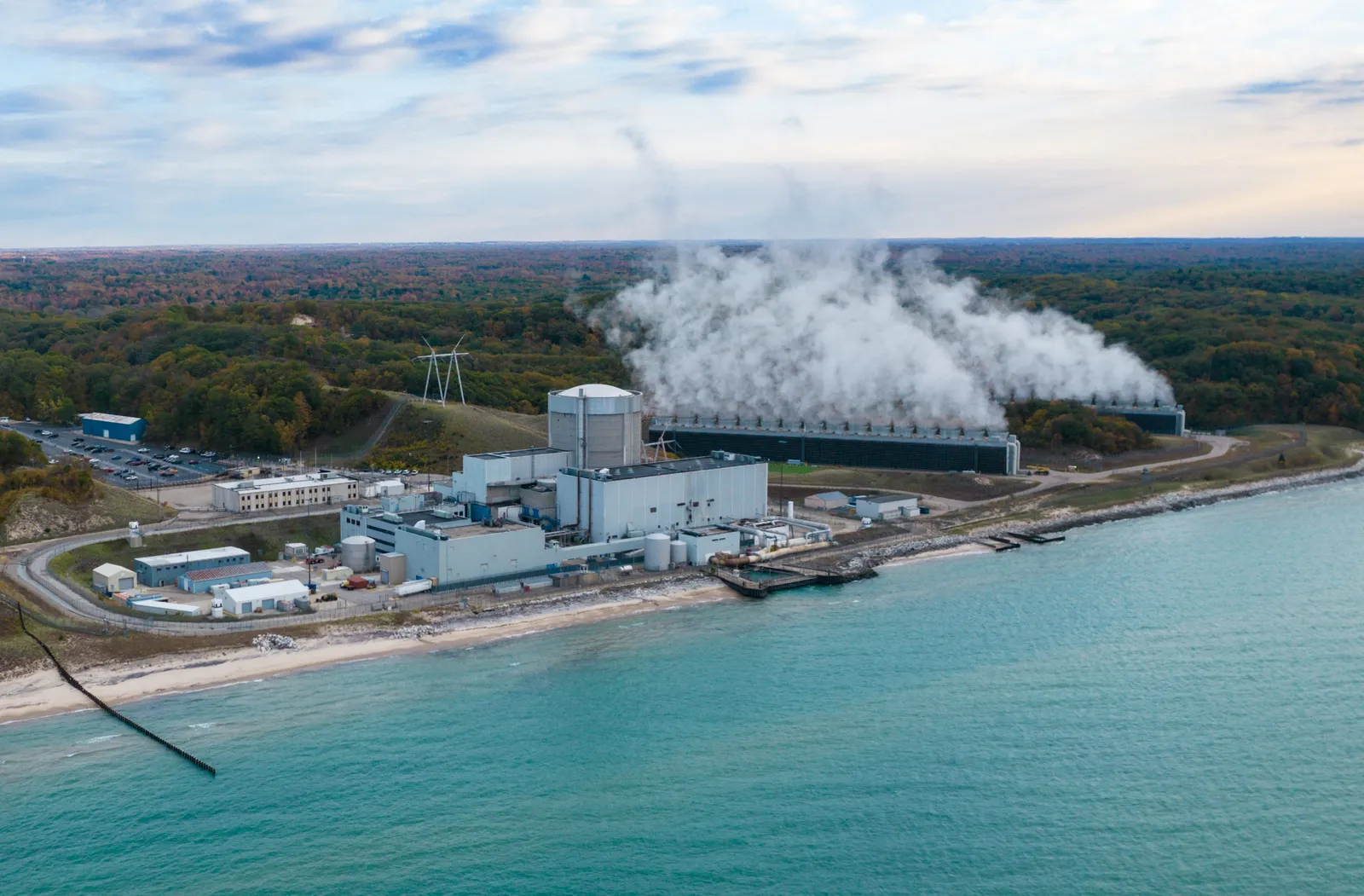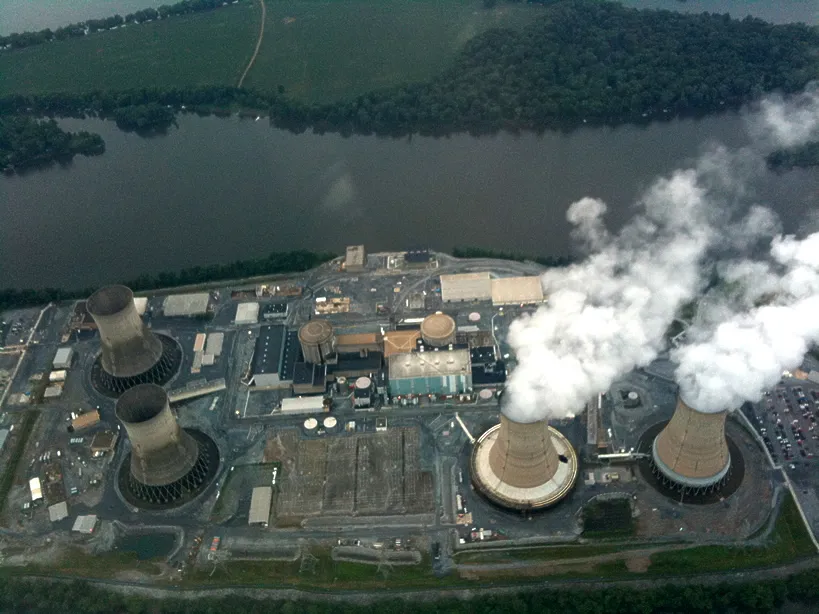Listen to the article
14 min
Constellation Energy made national headlines last month when it announced plans to restart operations at its shuttered Three Mile Island Unit 1 nuclear power plant in 2028.
The 835-MW Pennsylvania facility joins Holtec International’s 800-MW Palisades generating station, which could reopen next October in Michigan, on the short but growing list of recently-shuttered nuclear reactors targeted for a return to service. NextEra CEO John Ketchum said in July that his company was mulling a restart of its 601-MW Duane Arnold Energy Center in Iowa.
Constellation plans to spend about $1.6 billion on the TMI-1 effort, which will entail “significant investments” in major plant systems, a three-year relicensing engagement with the U.S. Nuclear Regulatory Commission, and a coincident three-year interconnection application and study process involving the PJM Interconnection and the Federal Energy Regulatory Commission, the company said in a Sept. 20 investor presentation.
Constellation has already inspected key power system components of TMI-1, begun work to restore its training simulator, and begun procurement of nuclear fuel and long-lead materials and equipment, according to the investor presentation. Major future activities include additional inspections, testing and restoration work, installation of the plant’s main power transformer and workforce development, it said.

Palisades nuclear power plant. Holtec International expects to resume operations at the plant in October 2025.
Permission granted by Holtec International
On Wednesday, Reuters reported that Constellation has ordered a power transformer costing about $100 million for the TMI-1 restart. That reported expense includes indirect costs like upgrading a bridge and disassembling, then reassembling a security checkpoint along the transformer’s route into the plant, a Constellation spokesperson told Utility Dive.
The company’s plan lays bare the considerable technical, regulatory and financial requirements of restarting a nuclear power facility, even one retired recently after 45 years of reliable operation. Constellation is pursuing a federal loan guarantee for the entire $1.6 billion cost it expects to spend to restart TMI-1, the Washington Post reported earlier this month. But “Constellation is still reviewing its financing options, no loan guarantee has been offered, and one is not needed for the project to go forward,” the spokesperson said.
Meanwhile, state and federal agencies have committed nearly $2 billion to the effort at Palisades, which retired in 2022 — three years after TMI-1 — and saw only limited decommissioning work before Holtec made the decision to restart it. Holtec International plans to spend up to $500 million of its own money on the Palisades restart, said Patrick O’Brien, its director of government affairs and communications.
How many retired nuclear power plants could be recommissioned?
Palisades, TMI-1 and Duane Arnold are among the most obvious recommissioning candidates of the more than two dozen U.S. nuclear reactors shut down in the past 50 years, said Keith Drudy, chief commercial officer at Studsvik Scandpower, a nuclear industry consultancy.
These are “the only three that we are hearing talked about publicly and likely the easiest to work with,” Drudy said. “For enough money, there might be one or two others,” such as the 2.2-GW San Onofre Nuclear Generating Station in Southern California, “but they would be long shots.”
“I don’t think you’re talking about restarting 20 plants in the United States.”

Patrick White
Research Director, Nuclear Innovation Alliance
Restarting Palisades, TMI-1 and Duane Arnold would bring 2,236 MW of conventional nuclear generation back onto the grid to meet escalating power demand from data centers, high-tech manufacturing and electrified transportation. And with the Microsoft power purchase agreement underpinning the Three Mile Island restart likely pricing its generation “a double-digit percentage higher than you’d expect from [the wholesale market],” it’s clear some industrial and high-tech power consumers are willing to pay a premium for reliable, low-carbon power, Drudy said.
But as the ten-figure budgets for the Palisades and TMI-1 restarts show, the tailwinds driving renewed interest in the nuclear sector can quickly run into economic reality. In Japan, eight corporate owners of nuclear reactors temporarily deactivated after the Fukushima Daiichi accident in 2011 spent up to $1 billion per reactor and an estimated $17 billion total over the following six years to restart them, according to the World Nuclear Association. NextEra’s Ketchum said in July that his company would restart Duane Arnold only “if we could do it in a way that is essentially risk-free with plenty of mitigants around the approach … [t]here are few things we would have to work through.”
Given the physical and economic realities of recommissioning even recently-retired reactors, the number of feasible U.S. reactor restart candidates is probably in the single digits, said Patrick White, research director at the Nuclear Innovation Alliance.
“I don’t think you’re talking about restarting 20 plants in the United States,” he said.
As the decommissioning process advances, the cost of undoing the work rises, Drudy explained. “At some point you tear the plant apart enough that it’s just not economical to build it back,” he said.
That’s the case for three other retired nuclear power stations now owned and being decommissioned by Holtec, including the 636-MW Oyster Creek Generating Station in New Jersey, the 677-MW Pilgrim Nuclear Power Station in Massachusetts and the 2,083-MW Indian Point Energy Center in New York, O’Brien said.
Though Holtec is looking at adding new small modular reactor capacity at Oyster Creek, too much decommissioning work has been done on the conventional generating assets there and at the other two Holtec plants to make a Palisades-like restart feasible, O’Brien said.
“You’re past the point of restarting those … short of putting a new reactor in the reactor vessel,” he said.
What’s involved in restarting a retired nuclear power plant?
Holtec’s situation highlights a key determinant of project risk for potential sponsors of nuclear reactor restarts: the state of the retired generating unit.
The time elapsed since shutdown is a factor in unit condition assessments, said Kate Fowler, global nuclear energy leader at Marsh McLennan, a commercial insurance and risk advisory firm. But the bigger question is how well the plant has been cared for during that time, she said.
The NRC requires extensive inspections and testing of plant systems and equipment before restoring the owners’ operating authority, and even recently-retired facilities may have deferred maintenance issues. For example, an inspection of Palisades’ steam generator earlier this year identified “the need for additional maintenance activities [by] on-site and external experts,” Holtec said on Sept. 18.
“Everyone’s kind of waiting to see what happens at Palisades.”

Patrick O’Brien
Director of Government Affairs and Communications, Holtec International
Another important consideration is how much work needs to be done on major plant components and systems before the facility can be safely — and legally — restarted, Fowler said.
The risk premium is likely to be higher at a nuclear site that needs lots of new equipment or extensive reconstruction, compared with a facility that merely needs refurbishment, Fowler said.
“The question is does it look more like a construction project or an extended refueling outage,” she said.
That may depend on the plant operator’s decommissioning strategy, White said. Some retired U.S. nuclear plants quickly went into “essentially deconstruction mode” after shutting down, while others chose SAFSTOR, he said.
A plant in SAFSTOR, sometimes called “deferred dismantling,” is “maintained and monitored in a condition that allows the radioactivity to decay [after which] the plant is dismantled and the property decontaminated,” according to the NRC. Because the plant remains largely intact for years, restarting it may involve less reconstruction, White said.
From that perspective, Palisades is the “closest to the goal line” of the three likeliest restart candidates, Studsvik Scandpower’s Drudy said. “Before they started doing anything in earnest [to decommission Palisades], they realized they might want to restart it.”
That’s reflected in Palisades’ compressed recommissioning schedule. Holtec bought Palisades from Entergy in June 2022, applied for restart-related financing from the U.S. Department of Energy’s Loan Programs Office in early 2023 and formally began the NRC licensing process in October 2023.
Holtec now has seven licensing actions under review by the NRC, most of which are expected to be completed by January. Palisades remains on track to resume operations in October 2025, O’Brien said.
Constellation expects to spend a bit longer — about four years — recommissioning TMI-1.
But even the Palisades effort is much more complicated than a long refueling outage. Holtec has already rebuilt the facility’s control room simulator, which it needs for personnel training, and is now turning to projects like refurbishing the turbine exciter — a year-long process — and flushing the primary cooling system, O’Brien said.
Site-specific technical challenges can complicate restart efforts at any retired nuclear facility, Drudy said. For example, he said, the boiling water reactor at Duane Arnold might require “different players” with expertise in that technology instead of the pressurized water reactors at Palisades and TMI-1. Storm-damaged cooling towers — which forced the plant into permanent shutdown two months ahead of schedule — are another wild card for Duane Arnold, he added.
Basic plant economics still matter as well, even with support building for more nuclear power on the grid, White said. Multi-unit and larger single-unit plants have better economies of scale than smaller single-unit plants, where “the economics could still be challenging” even with federal support, he said. And depending on the time left on the plant’s current NRC operating license, the project sponsor would need to be prepared to apply for a renewal, as Holtec is at Palisades, White said.
Finish the job or start from scratch?
No U.S. nuclear reactor has ever restarted after beginning decommissioning work, and “everyone’s kind of waiting to see what happens at Palisades,” O’Brien said. But TVA’s 1,150-MW Watts Bar Unit 2 successfully began operations in 2016 after a 20-year construction hiatus, said Jeff Merrifield, chair of the board of directors of the U.S. Nuclear Industry Council.
That raises the possibility of resuming construction on two 1,100-MW AP1000 pressurized water reactors at the V.C. Summer Nuclear Generating Station in South Carolina, Merrifield said.
Before South Carolina Electric & Gas and Santee Cooper abandoned construction in 2017 amid bankruptcy proceedings at Westinghouse, the engineering-procurement-construction contractor, crews had completed foundation work and made progress on other site infrastructure, “so it’s certainly possible that you could restart operations [albeit with] a significant amount of work to make that happen,” he said.
But as at many recently-retired nuclear plants, considerable deconstruction work has also occurred at the V.C. Summer site, Merrifield said, likely adding to the cost and complexity of a restart. And “there is a whole other set of issues around [site] ownership and the state’s concerns” that would further complicate the endeavor, he added.
“I personally believe it was a pity that construction stopped on those reactors,” Merrifield said.

Three Mile Island nuclear power plant. Constellation Energy announced plans in September to restart unit 1 in 2028.
A state nuclear advisory group visited the V.C. Summer site and found the site “actually in pretty good shape,” group member Jim Little told the South Carolina legislature this month. But Little acknowledged that there is no regulatory precedent for restarting construction on a nuclear power plant after its federal license has been terminated, the South Carolina Daily Gazette reported on Oct. 15.
Plant owner Dominion Energy “has no plans to restart construction of additional units,” a utility spokesperson told the Gazette.
Restarting work at V.C. Summer clearly counts as a “construction project” as opposed to a refurbishment project, Marsh’s Fowler said. But one factor working in its favor today — that wasn’t present when construction halted seven years ago — is the operational experience of thousands of people who helped build the AP-1000 reactors at Vogtle units 3 and 4 in neighboring Georgia, Fowler said.
“Now there are people in the United States who have brought this technology to operation and that is a benefit to [V.C. Summer],” she said.
A robust, active workforce is key not only to current and future recommissioning projects, but to efforts to build more nuclear reactors from the ground up, Fowler and Drudy said.
At its height, the Vogtle project employed thousands of construction personnel, a feat that will need to be repeated at scale to significantly expand the U.S. nuclear fleet in the coming decades.
The numbers involved in a restart may be smaller, but Palisades’ workforce has already more than doubled from a low of about 220 to approximately 450, according to O’Brien.
“Any nuclear asset that we can keep that workforce engaged [in] would be important,” Fowler said.
